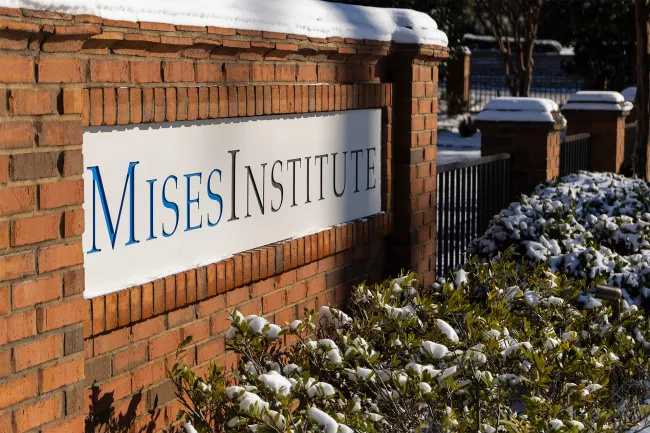On January 17, the Saudi minister of finance, Mohammed Al-Jadaan, announced that the Saudi state is open to selling oil in currencies other than the dollar. “There are no issues with discussing how we settle our trade arrangements, whether it is in the US dollar, whether it is the euro, whether it is the Saudi riyal,” Al-Jadaan told Bloomberg TV.
If the Saudi regime does indeed embrace substantial trade in currencies other than the dollar as part of its oil-export business, this would signal a shift away from the dollar as the dominant currency in global oil payments. Or measured another way, this would signal the end of the so-called petrodollar.
But how large of a shift is this? With the increasingly frequent Saudi comments about trading in nondollar currencies, we’ve also seen an increasing number of pundits announcing the “collapse” of the dollar or the imminent implosion of the dollar’s currently outsized global power.
Will a shift away from the dollar in the global oil trade really lead to a big relative decline in the dollar? Probably and eventually. But a number of other dominoes would need to fall first, most especially the domino we call “Eurodollars.”
On the other hand, it would be foolish to simply dismiss the potential end of the Saudi preference for the dollar with hand-waving. The end of the petrodollar would indeed weaken the dollar, even if this would not be a mortal blow in itself. Moreover, it is especially foolhardy to ignore the status of the petrodollar because that status also has geopolitical implications. Saudi comments on the dollar signal that the Saudis no longer consider its alliance with the United States to be as important as it has been since the 1970s. What’s not an immediate economic problem for the US regime or the dollar may nonetheless be an immediate geopolitical problem.
In context, probably the best way to look at the potential end of the petrodollar is to see it as one piece of the dollar-based portion of the global economy. Since the 1950s, the dollar has experienced an immense amount of support in terms of global trade and investment and in terms of dollar reserves held by foreigners. This has greatly propped up demand for US debt and for dollars, and this has had enormous disinflationary effects in the domestic US economy. That is, newly created dollars are soaked up by foreigners who both want and need dollars to pay off dollar-denominated debt and to pad bank reserves. But if global dollar dominance truly is in decline, we could potentially expect both higher domestic price inflation and higher interest rates than what Americans have become accustomed to over the past thirty years. In other words, as the dollar declines, the US regime will no longer be able to monetize debt and heap up immense new deficits without fear of high price inflation or falling Treasury prices. The end of the petrodollar is not a reason to panic right now, but it is the latest sign that the US regime’s power via the dollar is being reined in.
What Is the Petrodollar?
The petrodollar is the result of US efforts to secure access to Middle Eastern oil while also lessening the slide of the dollar in the early 1970s.
By 1974, the US dollar was in a precarious position. In 1971, thanks to profligate spending on both war and domestic welfare programs, the United States could no longer maintain a set global price for gold in line with the Bretton Woods system established in 1944. The value of the dollar in relation to gold fell as the supply of dollars increased as a byproduct of growing deficit spending. Foreign governments and investors began to lose faith in the dollar.
In response to these developments, Richard Nixon announced that the US would abandon the Bretton Woods system. The dollar began to float against other currencies. Not surprisingly, this devaluation did not restore confidence in the dollar. Moreover, the US had made no effort to rein in deficit spending. So the US needed to continue to find ways to sell government debt without driving up interest rates. That is, the US needed more buyers for its debt. Motivation for a fix grew even more after 1973, when the first oil shock further exacerbated the deficit-fueled price inflation Americans were enduring.
But by 1974, the enormous flood of dollars from the US into Saudi Arabia, the top oil exporter, suggested a solution. Nixon secured an agreement in which the US would buy oil from Saudi Arabia and provide the kingdom military aid and equipment as well. In return, the Saudis would use their dollars to purchase US Treasurys and help finance US budget deficits.
From a public finance point of view, this appeared to be a win-win. The Saudis would receive protection from geopolitical enemies, and the US would get a new place to unload large amounts of government debt. Moreover, the Saudis could park their dollars in relatively safe and reliable investments in the United States. This became known as “petrodollar recycling.” By spending on oil, the US was creating new demand for US debt and US dollars.
As time went on, thanks to Saudi Arabia’s dominance in the Organization of the Petroleum Exporting Countries (OPEC), the dollar’s dominance was extended to OPEC overall, which meant that the dollar became the preferred currency for oil purchases worldwide.
This petrodollar arrangement proved to be especially important in the 1970s and 1980s, when Saudi Arabia and the OPEC countries controlled more of the oil trade than they do now. It also closely tied US interests to Saudi interests, ensuring US enmity toward the kingdom’s traditional rivals, such as Iran.
The Petrodollar Is a Type of Eurodollar
In terms of its economic role, however, the petrodollar has always just been a type of Eurodollar.
What is a Eurodollar? According to Robert Murphy:
The term Eurodollar actually refers to any US dollar-denominated deposit held at a financial institution outside of the United States, or even a USD deposit held by a foreign bank within the US. It thus has nothing to do with the euro currency, and is not restricted to dollars held in Europe; they are dollar deposits that are not subject to the same regulations as US dollars held by American banks, nor are they guaranteed by FDIC (Federal Deposit Insurance Corporation) protection (and hence they tend to earn a higher rate of return).
The trade in Eurodollars is huge, although it’s difficult to quantify exactly how huge. One estimate puts Eurodollar assets at around $12 trillion. For context, we can consider that all assets in US banks total about $22 trillion. Or put another way, “offshore dollar banking now amounts to about half of the US total.” So, the Eurodollar economy is very large, and this “dollar zone” is also a key component of many of the world’s leading economies, given that half or more of the world economy lies in that zone.
In contrast, in 2020, the petrodollar trade amounted to less than $3.5 trillion annually. That’s not insignificant, of course, but even a sizable reduction in this amount will not on its own cause global demand for the dollar (relative to other currencies) to collapse. With so many trillions in dollar-denominated loans floating around the global economy, the petrodollar remains only a piece of a larger pie.
Nevertheless, we could also conclude that the end of the petrodollar is part of a larger and important trend away from the dollar. The relative size of the Eurodollar market has decreased since 2008, dropping from a peak of 87 percent of the size of the US banking system to under 60 percent. Meanwhile, the share of US dollars in the reserves of foreign central banks has fallen, dropping from 71 percent twenty years ago to 60 percent today. This is a twenty-five year low. Russia, China, and India all have shown interest in freeing the global economy from the dollar.
Even if this trend continues, demand for the dollar will most certainly not disappear next week or next month, or next year. There is still a hoard of trillions of dollars’ worth of dollar-denominated debt in the global economy, and—for now, at least—that means continuing demand for dollars. Moreover, the dollar remains one of the safest currencies to keep on hand, given that the central banks in Japan, Europe, the United Kingdom and China, are hardly embracing “hard money.” Given that the US economy remains enormous, and US Treasurys remain at least as safe as other regimes’ bonds, foreigners will still keep a lot of dollars on hand to buy American assets. This is also true because—in spite of the myth that “America doesn’t make anything anymore”—foreigners also buy US products and services.
This certainly doesn’t mean everything is just fine for the dollar, though. A movement away from the dollar—even in slow motion—will mean a rising cost of living for Americans. With fewer foreigners holding on to dollars, the US regime’s current runaway monetary inflation will create more domestic price inflation. In other words, movement away from the dollar will mean the US regime must engage in less monetization of the nation’s debt if it wishes to avoid runaway inflation. It also likely will lead to a need to pay higher interest rates on US government bonds, and that will mean a need for more taxpayer money to service the debt. It will mean that it will become more difficult for the US regime to finance every new war, program, and pet project that Washington can think up.
The Geopolitics of the Petrodollar
The more obvious short-term effects of the move away from the petrodollar will be in geopolitics rather than in the currency order. In addition to signaling that it is no longer wedded to the dollar, Saudi Arabia has also recently announced its openness toward Russia and a willingness to join the Brazil, Russia, India, China, and South Africa (BRICS) nations. This shift in strategic interests for Saudi Arabia potentially poses an immediate threat to US strategic interests, in that the US regime has become accustomed to dominating the entire Persian Gulf region through the US’s Saudi ties. A Saudi turn away from the petrodollar will magnify this shift. That will be enough to further threaten the American standard of living, but not enough in itself to end the dollar. After all, the pound sterling did not cease to exist after its own fall from its vaunted position as the preferred global reserve currency. But it did become far less powerful. The dollar is headed in the same direction.


